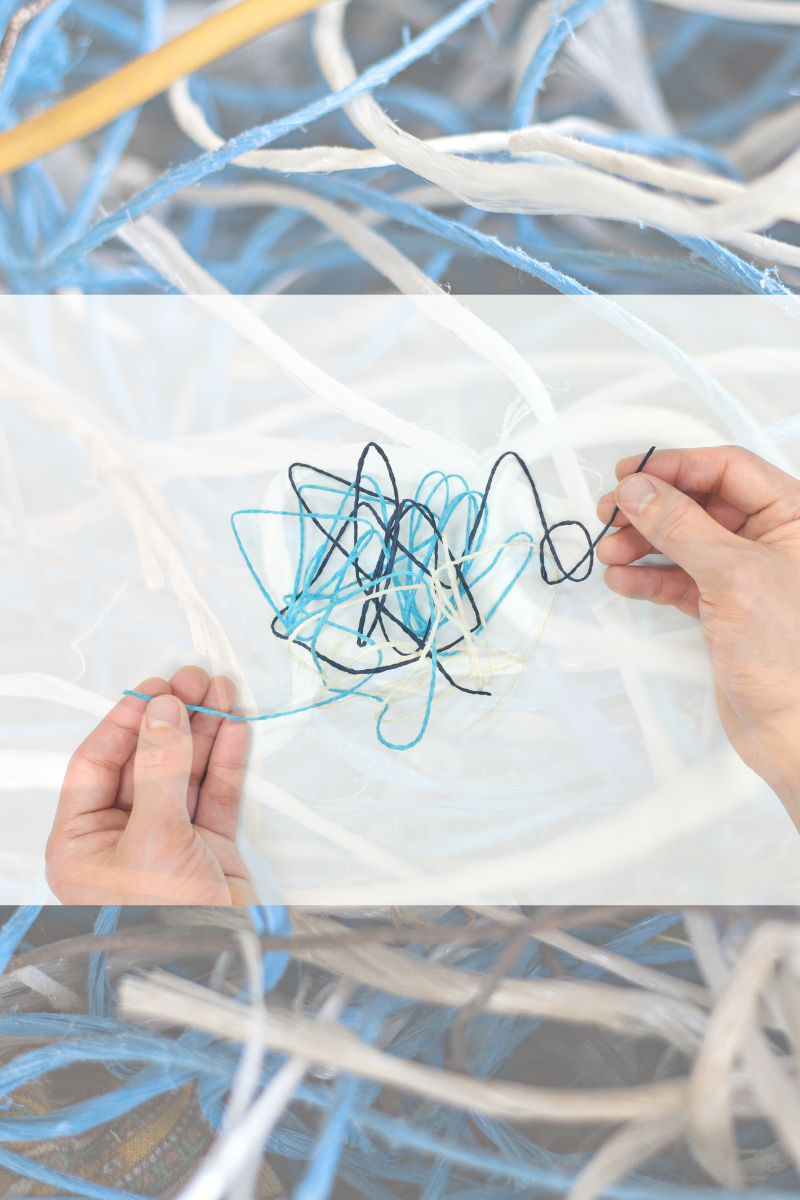Every Law Firm has a Wicked Problem – Here’s How to Solve It

Lawyers are no strangers to complex challenges—those intricate, multifaceted issues that defy easy solutions. And from the courtroom to the conference room, we solve these problems for our clients every day. But what about challenges within your law firm? Issues like diversity, equity, and inclusion, hiring and keeping top talent, attracting and retaining valuable clients, and providing outstanding legal services with ever-shrinking budgets.
These are the types of “wicked problems” that human-centered design is made to address.
Wicked Problems:
• Lack a clear, concise definition
• Have many facets and are difficult to categorize
• Are never completely solved
• Have an unlimited number of potential solutions
• Are unique to the context
Think about talent retention. If you asked a group of lawyers within your firm to define the issue, you would likely get multiple definitions. Some might cast it as an HR problem, while others might consider it culture related.

There are many ways to address talent retention and it’s fair to say that what works for one firm will not work for another because of the differences in culture, values, and personalities. Indeed, what worked for the same firm in 2019 may or may not work in a post-pandemic world.
Enter: Human-Centered Design
You can read my post on human-centered design which outlines its principles, but I’ll briefly review them here. Human centered design (HCD) is an approach to problem-solving that, as the name suggests, puts humans at the center of solutions. It involves:
- Focusing on people and their context: Understanding people’s lives, motivations, and pain points.
- Solving the right problems: Identifying root issues rather than surface-level symptoms.
- Recognizing complexity: Viewing everything as part of interconnected systems.
- Iterating and refining: Continuously prototyping, testing, and improving solutions to meet people’s needs.
“Wicked problems evolve, and their solutions must adapt accordingly.”
Human-Centered Design is an ideal approach for tackling wicked problems due to its inherent adaptability, empathy, and iterative nature. Wicked problems evolve, and their solutions must adapt accordingly. HCD embraces flexibility, allowing us to iterate, test, and refine solutions as we learn from real-world feedback. This requires a mindset that considers “failure” an integral part of the process. It is rare that a wicked problem (or any problem involving humans) will be solved on the first try. Even something that works well needs to be reevaluated as time goes on and a firm’s goals and priorities – and people – change.
In addition to iteration, designers also adopt a mindset of radical collaboration. Radical collaboration recognizes that good ideas can come from anywhere and that those who are impacted (i.e. stakeholders) by an issue should have a say in the solution. For example, an initiative to better support new partners should include at least a few of those new partners in the planning, rather than exclusively by the executive committee. When we engage directly with the people affected by the issue, we gain valuable insights that inform creative, context-sensitive solutions. Involving stakeholders throughout the process ensures that solutions remain relevant and responsive to changing contexts.
HCD also prioritizes understanding peoples’ needs, motivations, and pain points. This empathetic lens helps uncover hidden complexities within wicked problems. Correlated to empathy is a mindset of curiosity. Designers want to understand what lies behind an issue, even when it might be something we don’t want to face. Being curious suspends judgment and reveals a fuller picture of the problem we’re trying to solve.
This focus on curiosity, adaptability, empathy, and iterative learning aligns perfectly with the multifaceted nature of wicked problems, fostering innovative and sustainable solutions tailored to your law firm.
Case Study: Improving Talent Retention
Staff and attorney turnover costs firms hundreds of thousands of dollars each year, to say nothing of the cultural impact that often accompany departures.
In this case study, you’ll see how a fictional law firm uses HCD to address talent retention:
Facts: Derry, Simons & Herrera is a 200-attorney law firm with three offices on the west coast. DSH has a wicked problem: The staff and associate attrition rate is higher than the industry average. The executive committee has asked Jamie, the head of Talent Management, to “fix it.” Jamie, who is a fan of the Resourceful Lawyer, thinks this is the perfect opportunity to put HCD to the test.
The Approach

First, Jamie’s team dives deeper into the firm’s dynamics. They conduct in-depth interviews with attorneys, paralegals, and administrative staff. They uncover pain points: associates feeling overwhelmed by billable hours, staff members yearning for more recognition.
Based on these insights, the team creates two personas. “Alex,” the overworked associate trying to balance partner expectations and personal life; and “Kris,” the dedicated legal secretary, seeking acknowledgment. These personas reflect the aspirations and frustrations unearthed during the interviews.

A Promising Solution
Next, the team holds workshops at each office location. Each workshop begins with an introduction to Alex and Elena and an exercise where participants identify areas that could improve. At the last workshop, Jamie and the participants choose a solution to test with a pilot group. Jamie regularly monitors the pilot program, gathering feedback from the group, and reports back to the executive committee.
The pilot group’s feedback suggests tweaks to the program and another pilot group is added. After a few short weeks, the program is rolled out firm-wide and by the end of the year, the attrition rate is better than average.
Maintaining Momentum
Like the fictional firm of Derry, Simons & Herrera, law firms struggle with many wicked problems. And while the enthusiasm for new solutions carries the firm forward for awhile, it can be easy to fall back into the “old ways.”
Sustaining momentum in law firms requires a thoughtful, ongoing effort. Strategies that contribute to long-term success include:
Continuous Improvement
- Regularly assess processes and identify areas for enhancement
- Continue to streamline operations, automate repetitive tasks, and manage workflows
Feedback and Adaptation
- Seek input from attorneys and staff – and clients too!
- Be agile – adjust strategies based on feedback and changing needs.
Celebrate Wins
- Acknowledge achievements of all sizes
- Recognizing progress sustains momentum
By definition, wicked problems evade simple solutions. But they can be solved – as long as you don’t expect a “one and done” solution but are willing to see solutions as part of a journey that requires persistence, adaptability, and a willingness to iterate.
